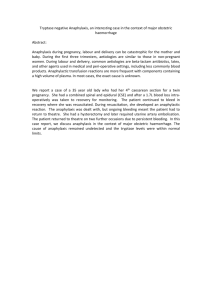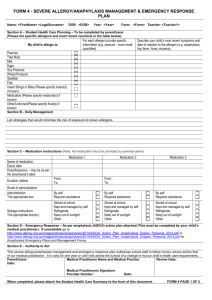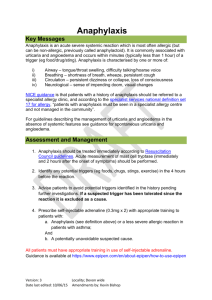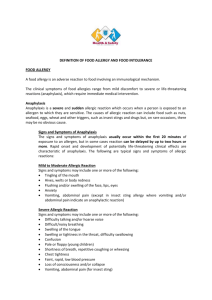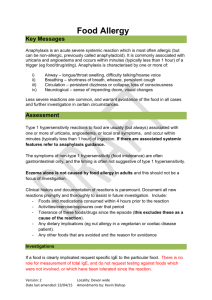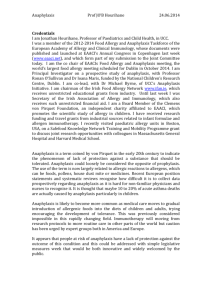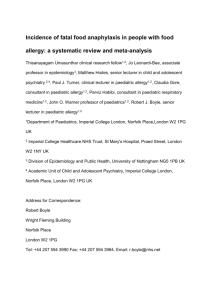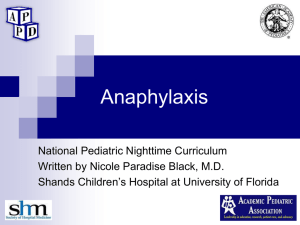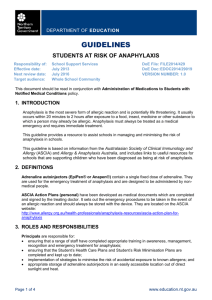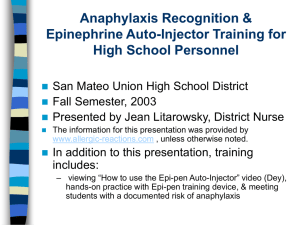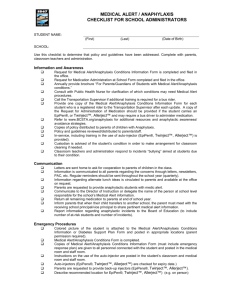Anaphylaxis Management Briefing Presentation (pptx
advertisement
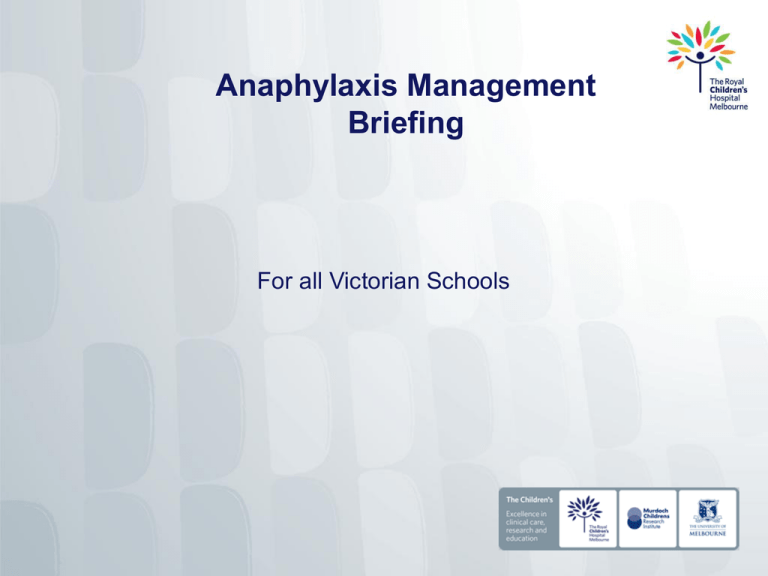
Anaphylaxis Management Briefing For all Victorian Schools Our School(Insert name of school) The children that are diagnosed at risk of anaphylaxis here are Insert picture of child here please Insert picture of child here please Insert picture of child here please Insert picture of child here please Insert picture of child here please Insert picture of child here please Signs & symptoms of anaphylaxis Anaphylaxis is the most severe form of allergic reaction It involves a change to BREATHING & / or CIRCULATION Symptoms and signs of anaphylaxis: Difficult/noisy breathing Swelling of the tongue Swelling/tightness in throat Difficulty talking and/or hoarse voice Wheeze or persistent cough Persistent dizziness or collapse Pale and floppy (young children) www.allergy.org.au/anaphylaxis Anaphylaxis Refresher Training Australian Society of Clinical Immunology and Allergy (ASCIA) Free online training available at: http://www.allergy.org.au/patients/anaphylaxis-e-trainingschools-and-childcare www.allergy.org.au/anaphylaxis www.allergy.org.au/anaphylaxis The school’s First Aid and Emergency Response All staff need to know the school’s Anaphylaxis Policy and Emergency Procedures The student’s ASCIA Action Plan For Anaphylaxis must be followed in responding to an anaphylactic reaction On-going support and training resources • Anaphylaxis Guidelines – published by Department of Education & Early Childhood Development in 2014 • Anaphylaxis Advisory Support Line: 1300 725 911 or 93454235 • www.allergy.org.au - ASCIA Action Plans for Anaphylaxis can be downloaded from the ASCIA website • www.rch.org.au/allergy - Department of Allergy & Immunology, Royal Children’s Hospital • www.allergyfacts.org.au – Allergy & Anaphylaxis Australia Inc website or phone line support 1300 728 000 Slide 5.10
